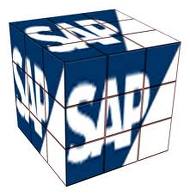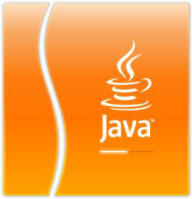|
Solutions
|
|
Overview : At Ruwa Consultants, we convert domain knowledge into business solutions, which can simplify businesses of our clients. We work in close collaboration with the industry and clients to develop solutions that solve business probl ems. This Solution management experience coupled with our domain expertise enables us to continuously improve and adopt our solution to the ever-changing business ecosystem. ems. This Solution management experience coupled with our domain expertise enables us to continuously improve and adopt our solution to the ever-changing business ecosystem.
EPM : SAP BusinessObjects enterprise performance management solutions offer comprehensive functionality for:
ERP : Many businesses have invested in ERP products seeking business benefits....
CRM : Organizations are refining their business models in order to find, acquire and retain customers....
E-Business : Technology savvy organizations have created tremendous opportunities to leverage the web.....
Web Solutions : Our expertise has been utilized in the development of horizontal portals....
CPM: SAP BusinessObjects enterprise performance management solutions offer comprehensive functionality for:
.NET : .NET Application Development is centered on the powerful .NET framework...

Data Warehousing : Data stage, Informatics..
|
|
SAP : SAP BusinessObjects enterprise performance management solutions offer comprehensive functionality for:

Strategy management – Set your goals, map your strategies, and then monitor and manage performance from high-level objectives down to operational metrics.
Business planning and consolidation – Increase accuracy in planning at every level in your organization, while reducing budget cycles and associated costs. Accelerate and improve your statutory and management reporting and decision making.
Financial consolidation – Complete your financial consolidation and reporting cycles faster – with complete confidence in your data.
XBRL Publishing – Simplify and accelerate the preparation of XBRL documents to communicate financial and business data.
Financial information management – Leverage powerful connectivity, mapping, and loading functionality designed for business users.
Intercompany reconciliation – Accelerate your close by enabling your business units to debate and reconcile balances directly with one another and eliminate delays at the corporate and divisional levels.
Profitability and cost management – Identify the causes of underperformance, and take action to reduce costs and optimize profitability across dimensions such as product, customer, and channel.
Spend performance management – Maximize cost savings and reduce supplier risk by gaining continuous visibility into company-wide spending patterns, savings potential, and external market factors.
Supply chain performance management – Measurably improve supply chain effectiveness by focusing on actionable, operational process metrics that impact supply chain performance.

ERP : Many businesses have invested in ERP products seeking business benefits in terms of cost efficiency and productivity gains. Organizations now demand the return on their investment in ERP systems and are cautious about investing further in ERP. Consequently the demand of ERP and implementation and support services has also undergone considerable change. The challenge is to demonstrate the business benefits of the ERP systems at a reduced cost of ownership. For most global companies, speed of ERP implementation coupled with a worldwide rollout delivery capability is critical for maximizing the ROI from ERP investments.
A Stitch a Time Saves Nine - Reducing Downtime
ERP applications have a direct relation to the business process and hence are mission critical in nature. When the ERP system is unavailable or under-performing productivity is impacted – employees, suppliers, and customers are all standby until it is resolved. A typical case of replacing failed equipment or lost data, or bugs in the interfaces can contribute to an increase downtime and can spring up unpleasant financial surprises.
Research studies have revealed that only 5% of mission critical applications achieve a level of availability that produces less than 9 hours of downtime per year, and that 70% of the companies desiring this level of availability will not be able to justify the cost to achieve it. It is imperative that the ERP system is supported with the highest service levels, which brings about the need for doing a range of maintenance activities ranging from corrective to adaptive maintenance.
LEVELING THE MORNING AFTER…” - PERFORMANCE OPTIMIZATION
Implementing the ERP is only the first step. However the real challenge lies in the successful execution of a quality assurance plan, otherwise known as a post-implementation plan. To obtain the full benefits, operational synergies and an optimal on investment (ROI) from the system, organizations look beyond going live and focus on improving performance. Performance optimization is the “enabler” for a company to reap the benefits of an ERP system and achieve and achieve
Optimization is the “morning after” effort to evaluate the success of the imple mentation and maximize ROI by flattening the learning curve for the new system. Optimization should be planned and executed with the same diligence and accountability that was accorded to the initial system implementation. Too often this is an area that is not given due diligence because of shortage of internal IT staff. External service providers with experience, strong methodology and proven expertise can help organizations to fine-tune their applications thereby ensuring optimal mentation and maximize ROI by flattening the learning curve for the new system. Optimization should be planned and executed with the same diligence and accountability that was accorded to the initial system implementation. Too often this is an area that is not given due diligence because of shortage of internal IT staff. External service providers with experience, strong methodology and proven expertise can help organizations to fine-tune their applications thereby ensuring optimal
“THE LAW OF ELASTICITY” - Resource Optimization
It is accepted wisdom that ERP success depends on staffing the project with the best and brightest from the business. Losing key ERP personnel in the volatile IT market is a major threat for smooth continuity of operations. This poses challenges in scalability and retention.
ERP applications require flexibility to scale resources to meet the changing business requirements as the organization’s processes evolve. When an ERP application stabilizes it is possible to maintain it with fewer resources. This implies that the resources that were initially maintaining the task might not be required for a continuous period if there is high productivity efficiency and hence need to be re-deployed into other initiatives.
Maintenance is an extremely demanding and very mundane activity that requires constant vigil, and a service driven approach. These results in a scenario where an organization invests in high cost staff, that is relatively scarce to get and deploys them in mission critical but low-end work, which could result in losing the resource. The solution is therefore to balance the availability to balance the availability of internal resources for business critical and higher value-add work. Service providers with teams of specialized and experienced professionals would be able to meet the fluctuating demands without compromising on the service levels and also guarantee continuity.
“SAME FOR LESS” - Cost Optimization
The maintenance phase of any ERP system unlike the implementation faces specific issues due to its recurring costs. Maintenance expenses are usually underestimated, an often end up costing far more than the initial purchase. ERP outsourcing relieves the cost pressures from organizations by weeding out unnecessary recurrent costs. By negotiating with outsourcing service providers for fixed charges that are lower than the internal IT costs organizations can not only efficiently reduce costs but also effectively create the time and money needed for the projects they really need or want to put in place.
… And Inadequate Support Models

Many companies that have implemented ERP have realized that the high level of customization of the product blocks support from the ERP vendor. This makes maintenance an extremely expensive affair. Performance problems in online/batch processes that are a result of basic ERP design and implementation issues detected in post-implementation scenario make it difficult and time consuming for the maintenance team support the ERP.
The success in achieving these benefits lies in identifying the right service provider. Both the organization as well as the service provider need to invest time and efforts to establish a smooth transition and management as it involves managing business critical system. This requires for a partnership approach rather than a vendor management model.
|
CRM (Customer Relationship Management ): Organizations are refining their business models in order to find, acquire and retain customers. They endeavor to maximize on customer interactions while leveraging on data obtained incrementally and shared across all customer touch points. They look to identifying and implementing best practices around their customer processes and arrive at business models that maximize returns from their customer relationships. A host of solution approaches, ranging from building applications to implementing scalable packaged applications or utilizing hosting solutions are available in the market.
However, in realizing returns from these, organizations have found that “no one shoe fits all”. Organizations need solutions that are quickly implemented, and enable them to actualize their business potential. They need Solutions that leverage best in class processes and real-time reporting systems that ensure operatio nal efficacy. They need Partners who can help them decide, implement, maintain and realize nal efficacy. They need Partners who can help them decide, implement, maintain and realize
Ruwa Consultants has extensive experience in partnering the CRM initiatives of its customers in the Insurance, Financial Services, Manufacturing and Consumer Goods industries. With our strong domain expertise and partnerships , coupled with our robust methodologies and in-house tools, we provide our clients range of value-added services:
> Enterprise CRM Consulting
> Implementation
> Integration
> Up gradation & Migration
> Application Care
Ruwa Consultant's Implementation Expertise We understand that CRM initiatives reach across functional boundaries.
Our CRM implementation expertise spans the many functions critical to the success of CRM initiatives:
> Sales planning and monitoring, lead management, revenue and product forecasting
> Product configuration and pricing, order entry and fulfillment
> Retail and trade marketing & distribution
> Field personnel deployment, service inventory optimization, repair and returns integration
> Agent and dealer management
> Marketing campaigns and telesales, customer response management
> Customer care and provisioning enablement
> Complex order management
> Billing front-end
> Fraud management front-end |
|
E-Business : Technology savvy organizations have created tremendous opportunities to leverage the web as a cost-effective vehicle, for delivering and integrating multiple business functions, from procurement to processing. At Ruwa Consultants, we build and implement end-to-end e-Business solutions that seamlessly integrate with diverse applications. We focus on providing unique, cutting-edge solutions for our clients and help distinguish them from their competition.

Ruwa Consultants Some of End-to-End e-Business Services:
> Web-based Enterprise Applications
> Enterprise Portals
> Web Integration of Enterprise Value Chain
> Web Application Maintenance
> Web Products Engineering
> Web Application Verification and Validation
Technology-focused Centers of Excellence provide expertise in diverse technology areas covering Middleware Integration, Application Server, and Portals & Content Management. Ruwa Consultants e-Business offerings are adaptive to client needs and bring distinctive value across a broad range of technology offerings enabling clients to deliver the highest level of quality and service. Our well-defined and proven methodologies ensure that the solutions we deliver are high quality, delivered on time and optimally leveraged through offshore teams.
Ruwa Consultants develops B2B and B2C ecommerce solutions that are fully integrated with a company's existing business systems. We help businesses realize results from their ecommerce initiatives by building the framew ork, systems, tools, and compelling interface design required to empower customers to complete purchase transactions with ease and confidence. We offer a powerful combination of design and technology. This comprehensive set of online e-commerce technology is designed to help you make the most of your new or existing business. Our Ecommerce solutions will help you increase your sales and improve your bottom line. ork, systems, tools, and compelling interface design required to empower customers to complete purchase transactions with ease and confidence. We offer a powerful combination of design and technology. This comprehensive set of online e-commerce technology is designed to help you make the most of your new or existing business. Our Ecommerce solutions will help you increase your sales and improve your bottom line.
|
|
Web Solutions : Our expertise has been utilized in the development of horizontal portals with a broad range
of users, and vertical portals or mortals, catering to the needs of narrower audiences or 'online communities'. Our Portal Development activities cover everything from concept, design and content development to site development and maintenance, installation of components, graphics, interactive animation development, banners and ad-creation, updating and improving of content
Some of our Application Features Include:
> E-Commerce Applications
> Financial Transactions
> Internet Applications
> Intranet Applications
> Online Applications
> Event Schedulers
> Search Engines
> Entertainment
> Poll Analysis/Gallup Poll
> Online Chat and Voice Chat
> Advertisement and Media Promotion
> Site Repository with linking facilities
WEB Services
Java : We have established a strong understanding of J2EE application servers. Ruwa Consultants are currently conducting detailed experimentation with recently released Java APIs that provide integral support for XML.
IBM : Ruwa Consultants has expertise on Web Sphere Advanced Application Server version 4.0, which supports  Web Services development through SOAP, WSDL & UDDI. Web Services development through SOAP, WSDL & UDDI.
Microsoft .NET Framework : Ruwa Consultants has established a competency center to excel in building Web Services
architecture based applications using Microsoft's .NET framework. We have expertise in C#, Common Language Runtime, VB .NET, ASP .NET, COM/COM+, SOAP and .NET Enterprise servers such as BizTalk.
|
|
JAVA-J2EE : Ruwa Consultants provides the highest application quality and shortened development cycles by employing best in class J2EE Application framework in our development work as per the project requirements. We provide design and development services designed to deliver software that efficiently utilizes the services available from Java application servers and the J2EE framework, including Java Server Pages, Java’s Messaging Services and JDBC. Ruwa Consultants provides services for not only Java application development Or J2EE application development But based on resource allocation model we also provide Java programmers Or Java consulting services.
The reason for popularity of J2EE is application component reuse, which significantly reduces development time and costs. Businesses can also achieve greater developer productivity and faster returns on their IT investment. J2EE promotes Programming in Java Resulting in Java-centric computing, and all components deployed into a J2EE deployment (like EJB components and Server) must be written in the Java language. Other languages can be bridged into a on their IT investment. J2EE promotes Programming in Java Resulting in Java-centric computing, and all components deployed into a J2EE deployment (like EJB components and Server) must be written in the Java language. Other languages can be bridged into a
Our Technical Expertise Includes:
> Application design and development on J2EE compliant framework.
> Expertise on Entity, Session and Message Beans
> JSP & Servlets
> JMS
> Web services
> J2EE Design Patterns
> WDSL, UDDI, SOAP, ebXML
> Development on J2EE-compliant application servers, including BEA Web Logic and IBM Web Sphere
> B2B Integration (ebXML, SOAP)
J2EE specification implemented:
> J2EE Design and development guidelines.
> N-tier architecture.
> Enterprise JavaBeans (EJB) 2.0
> Java Server Pages (JSP) 1.1 /Servlets 2.3
> Java Database Connectivity (JDBC) 2.0
> Java Naming and Directory Interface (JNDI) 1.2
> Java Transaction Service and API (JTS, JTA) 1.0
> Java Message Service (JMS) 1.0.2
> Java Activation Framework (JAF) 1.0
|
.NET : NET Application Development is centered on the powerful .NET framework, which is a unified set of libraries and a common language runtime. The .NET framework gives the developer all types of building blocks and development environment to make software’s including desktop applications, web-based applications and Web Services used for System Integration by using the platform independent communication protocol such as XML and SOAP.
The reason for popularity of J2EE is application component reuse, which significantly reduces development time and costs. Businesses can also achieve greater developer productivity and faster returns on their IT investment. J2EE promotes Programming in Java Resulting in Java-centric computing, and all components deployed into a J2EE deployment (like EJB components and Server) must be written in the Java language. Other languages can be bridged into a on their IT investment. J2EE promotes Programming in Java Resulting in Java-centric computing, and all components deployed into a J2EE deployment (like EJB components and Server) must be written in the Java language. Other languages can be bridged into a
Our Technical Expertise Includes:
> Application design and development on J2EE compliant framework.
> Expertise on Entity, Session and Message Beans
> JSP & Servlets
> JMS
> Web services
> J2EE Design Patterns
> WDSL, UDDI, SOAP, ebXML
> Development on J2EE-compliant application servers, including BEA Web Logic and IBM Web Sphere
> B2B Integration (ebXML, SOAP) |
Data Warehousing : Informatics & Data stage: Informatics is a tool, supporting all the steps of Extraction, Transformation and Load process. Now a days Informatics is also being used as an Integration tool. Informatics is an easy to use tool. It has got a simple visual interface like forms in visual basic. You just need to drag and drop different objects (known as transformations) and design process flow for Data extraction transformation and load. These process flow diagrams are known as mappings. Once a mapping is made, it can be scheduled to run as and when required. In the background Informatics server takes care of fetching data from source, transforming it, & loading it to the target systems/databases.
Informatics can communicate with all major data sources (mainframe/RDBMS/Flat Files/XML/VSM/SAP etc), can move/transform data between them. It can move huge volumes of data in a very effective way, many a times better than even bespoke programs written for specific data movement only. It can throttle the transact ions (do big updates in small chunks to avoid long locking and filling the transactional log). It can effectively join data from two distinct data sources (even a xml file can be joined with a relational table). In all, Informatics has got the ability to effectively integrate heterogeneous data sources & ions (do big updates in small chunks to avoid long locking and filling the transactional log). It can effectively join data from two distinct data sources (even a xml file can be joined with a relational table). In all, Informatics has got the ability to effectively integrate heterogeneous data sources &
Data Stage is an widely used ETL tool other than Informatics which is a product of IBM and if you are interested to know about it or if you are working on it just go through the following PPTs which describes the features and components of Data stage, its architecture, how to use and performance tuning tips and tricks Data Stage is a client/server application, in that some components sit on a client system while other components sit on a server system (which must be Windows NT, 2000, XP or UNIX).
Components: The client components are the Data Stage Administrator, the Data Stage Designer, the Data Stage Director and the Repository Manager. On the server there is the Data Stage Repository (where metadata, etc., are stored) and software that supports interaction with the repository and the outside world. Communication between the client tools and the Data Stage server is effected using Universe Objects. The Data Stage server communicates with external data sources using various mechanisms including ODBC, native APIs, bulk loaders, and FTP. |
|
|

